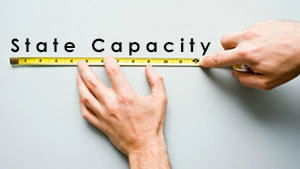Introduction
According to many observers, the rapid diffusion of new ICTs such as the Internet and social media has empowered people worldwide. Today, social media users, for example, have direct access to the public sphere and can thus launch campaigns to sway public opinion. These new channels have given voice to millions of people who previously could not be part of open discussions on issues that affected their lives.
 Governments, national and subnational, are also users of new ICT platforms that, in most cases, are beyond their own jurisdictions and do not require passports. Governments thus need to have defined strategies to promote the use of ICT and social media in policy and decision-making processes and foster the delivery of public services for all.
Governments, national and subnational, are also users of new ICT platforms that, in most cases, are beyond their own jurisdictions and do not require passports. Governments thus need to have defined strategies to promote the use of ICT and social media in policy and decision-making processes and foster the delivery of public services for all.
Harnessing ICTs for such purposes is not just a technical issue, as it is usually assumed. For sure, issues surrounding the adoption and adaptation of ICTs have a crucial role. But they are not the only ones at play. In fact, the government needs to take stock of and map current internal capacities to assess where they stand and identify gaps, opportunities, and challenges to deploy adequate resources and solutions to tackle them.
Approach
In this light, governments should map its internal capacities along with the following components:
- Policy capacity: States should have the capacity to design and develop relevant policies that can be implemented. Legislatures have a role to play here too, especially in ensuring fiscal resources for implementation and mainstreaming.
- Institutional capacity: The ability of governments to implement policies on the territories under their control through a variety of institutions that have a legal mandate to do so. This component also refers to the government’s capacity to change the “rules of the game” flexibly and quickly adapt.
- Fiscal capacity: Financial resources should be readily available in the medium term for the procurement, implementation, management, and maintenance of ICT platforms and all associated costs. Governments only plan for the procurement and implementation phases.
- Human capacity: Governments should have the internal human capacity to support the process. Governments might have to modernize or retrain current human capacities to interact with citizens, use the new platforms and mainstream co-creation. ICT capacities are part of this component and include both technical and managerial capacities. Technical capacities include hardware, software, Internet, infrastructure, etc. Managerial capacities refer to the capacity to run ICT projects – not directly related to ICT expertise per se.
It is essential to note that governments do not need to host and run their own ICT platforms. In most cases, this is probably not ideal as many governments already have limited overall capacities, ICT included, especially if they are local or subnational. But they still require to develop and sustain all other capacities mentioned above.
Tools
On the ICT side, tools or instruments to undertake an assessment exercise are usually linked to e-readiness methodologies that measure the ICT preparedness of governments and others. Some of these methodologies are available online and can be completed. Other more comprehensive ones demand direct interaction with the client and in situ work.
However, these methodologies are usually oblivious to key non-ICT themes, particularly fiscal and institutional capacities, as well as non-ICT skills and competencies required to run government effectively.
The best tools to undertake a comprehensive assessment of government capacities take a horizontal or cross-cutting approach to the issue. While many of these tools are not ICT-aware, it is always possible to complement them by adding such dimension into the overall analysis. In this light, capacity assessment tools enhanced with ICT components are the best suited for this purpose.
Cheers, Raúl

